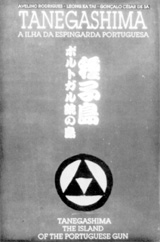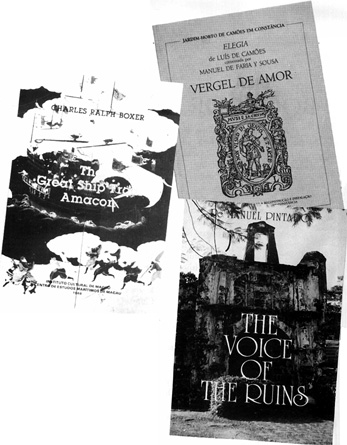The printed word is one of the greatest cultural contributions which we can make for the future. Macau has included an energetic publishing policy in the preparations being made for its own particular future.
Not that this is a new approach. Macau has been aware of its own identity since the late XⅨth century when researchers and writers began to express this in words. Since then, historians have worked towards producing a "biography" of the territory although they have still not succeeded in capturing its complete personality. Important contributors in this task have included Charles Boxer, Father Benjamin Pires and Father Manuel Teixeira, amongst others. In the field of anthropology and ethnography, the name which comes to mind is that of Ana Maria Amaro, a tireless researcher who has attempted to record the authentic spirit of the city in her extensive studies, many of which have yet to be published.
There still remains much to be researched and published, and published in forms which are easily accessible to the general reader. A complete publishing policy should function not only as a means of recording history and culture, but also as a way of bringing together the community by identifying its collective inheritance.
It is true, however, that the prospect of Macau's transition from the Portuguese Administration to Chinese rule has acted as a catalyst within the territory. There has been an incredible level of publishing activity falling in line with a cultural strategy which can no longer be postponed.
In general, it can be said that the books which are now being produced have a genuine contribution to make towards this inheritance, towards stimulating the memories of future generations.
Contrary to the lull which hangs over the European publishing houses during the Summer, the Cultural Institute's Publishing Department has seen around ten titles through the press. These range over a wide variety of topics but we shall only be able to take a look at the most outstanding of them.
July saw the second edition of Património Arquitectónico de Macau, this time published in a trilingual edition - Portuguese, Chinese and English. According to the Portuguese Bookshop, this book has been a best-seller in Macau. It is really a "family album" of the city and its heritage, the pages consisting of a beautiful sequence of images, close-ups, pan shots, façades, interiors, which amount to a film script in stone.
Chinese architecture, churches, mansions, art deco architecture, gardens, buildings lost, buildings renovated, these all form the substance of the book, these all form the substance of a city which has its own particular cultural heritage.
The architect Francisco Figueira and graphic designer and artist Carlos Marreiros worked together to produce this unique and valuable book. Although it has obviously been enriched by the addition of Chinese and English translations, there is a sorry omission in the form of the introduction to Macau's actual architecture by Marreiros which figured in the first edition.
Another notable publication this quarter was Tanegashima - Ilha da Espingarda Portuguesa/ Tanegashima -the Island of the Portuguese Gun, also a trilingual edition. This was one of the contributions in Macau's participation in the celebrations at the annual Teppo Matsuri in Tanegashima. The festival commemorates the arrival of the Portuguese in Japan and with them the technology to produce fire-arms. The book, edited by Gonçalo César de Sá, consists of an extravagant sequence of photographs of the festival events taken by Leong Ka Tai, with an introduction by Avelino Rodrigues explaining the ceremonies, and recalling the Portuguese presence in Japan. The finest photographs were selected to make up a collection of picture postcards which came out at the same time as the book itself.
Three "classic" texts concerning the role of the Portuguese in the Orient were published during the same month (July).
Jordão Freitas' Macau -Materiais para a Sua História no Século XVI examines the first contacts between the Portuguese and the Chinese. This is the third edition of the text, the first having been published in "Archivo Histórico Português" (vol III, 1910) and the second in the magazine "Mosaico" (July/ September, 1955). The second edition carried an introduction by António Nolasco da Silva which has been reprinted in this edition. Despite the fact that the text is very short, it is an extremely valuable reference guide for document sources.

Ásia Sínica e Japónica by Brother José de Jesus Maria, a member of the order of Arrábida (the name of a monastery in Portugal), is an important work in the history of the Portuguese. The book was written in Macau between 1740 and 1745, covering three hundred and fifty one pages of manuscript. It was discovered by J. F. Marques Pereira, the editor of the newspaper Ta-Ssi-Yang-Kuo, in 1899 and he started to make notes to the text and publish it in installments in his magazine. Later on, Charles Boxer came across the manuscript in 1939 and started to publish his own annotated version in the “Boletim Eclesiástico da Diocese de Macau".

An offprint of this was produced in 1941 and in 1950 the complete second volume was printed in the Goverment Press. One of the most valuable aspects of this book is that it is a record of the oldest documents and codices belonging to the Leal Senado which have been destroyed in the intervening years. The new edition is a joint publication between the Cultural Institute and the Centre for Maritime Studies and was produced to commemorate the visit of the historian Charles Boxer to the Territory.
The same motive led to the re-edition of Charles Boxer's The Great Ship from Amacon, again a joint venture by the same two bodies. This is a basic text for anyone wanting to understand trading with Japan. The introduction, written by Rear-Admiral Manuel Vilarinho, pays homage to the books as follows: "Macau, its vizinhos, the Senate, the Captain-majors, the Jesuits, the merchants, and the role each one of them played in the great adventure the Japan trade proved to be, as well as the difficulties the Portuguese experienced with their virtual allies the Spaniards, the their sea-rivals the Dutch, and to a lesser degree the English, are so vividly presented that the reader has the sensation that he is viewing a film produced by a great director, who knows intimately his players and gets out of them their utmost."
The months of August and September saw the publication of less hefty books, but nonetheless worth mentioning.
The Cultural Institute published Vergel de Amor-Elegias de Luís de Camões comentadas por Manuel de Faria e Sousa in conjunction with "The Association for the Reconstruction and Establishment of a House Museum to Commemorate Camões in Constância". The text has been edited by the writer and journalist Manuel de Azevedo. The elegy has notes written by Faria de Sousa explaining Camões's use of flowers and there are also notes on the "mythology of plants" and "the Ptolemaic planetary theory" as well as three sonnets by Camões, dedicated to his Chinese mistress, Dinamene.
Actas do Seminário - Ciência Náutica e Técnicas de Navegação nos Séculos XV e XVI is a collection of the texts by Chinese and Portuguese specialists presented at the Seminar on the same topic. The book was prepared by the Research Department of the Cultural Institute and for a fuller discussion of its contents we suggest the reader looks at the article printed in this magazine by Aníbal Mesquita and Manuel Bairrão Oleiro.
Father Manuel Pintado's history of the life of St. Francis Xavier was published in two separate language editions (Portuguese and English), the book having originally been published in English. A Voz das Ruínas / The Voice of the Ruins. "gives its readers a short account of his works and deeds, particularly in Malacca, where he stayed and lived, on five occasions".
In July, the Cultural Institute's Special Projects Department launched the first part of a new collection of children's books based on the popular traditions and culture of Macau. The collection, Contos e Lendas de Macau was first launched in Lisbon and later the first six titles were brought out in Macau: Um Estranho Barulho de Asas, O Templo da Promessa, As Mãos de Lam Seng, Uma Voz do Fundo das Águas, As Árvores que Ninguém Separa and O que Sabem os Pássaros, all of them written by Alice Vieira, a well-known Portuguese children's authoress. The books are illustrated by Lok Tai Tong, an artist and teacher at the Faculty of Fine Arts in the University of Shanghai, and also by Evelyn Poon.
The next six volumes to appear in this collection are to be written by António Torrado and will also be based on "the everyday life of the territory or adaptations of legends taken from various sources".
Translated from the Portuguese
by Marie Imelda Macleod
start p. 119
end p.